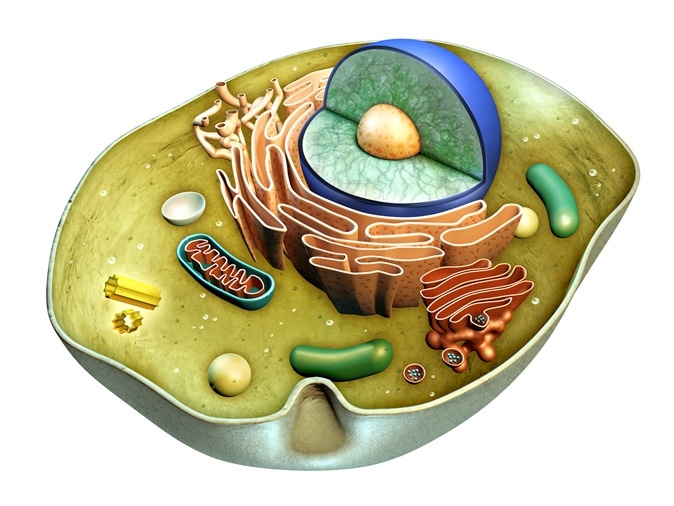The human body is made up of 100 trillion cells and a team of scientists are now planning on cataloguing and imaging each of these cells in the body and creating a 3D human body map.
There are over 200 types of cells in the body from 80 different organs and the researchers would map out the genes that activate these cells in details in this new Human BioMolecular Atlas Program (HuBMAP).
The HuBMAP program was announced as a years long initiative by the National Institutes of Health in 2017 to develop a global framework for “comprehensively mapping the human body.”

Internal structure of a cell. Digital illustration. Image Credit: Andrea Danti / Shutterstock
This new project follows the Human Genome Project from the early 2000s and is just as ambitious. Five tissue mapping centres are collaborating in this project. One of these is the University of Florida. University of Florida for example is mapping tissues and cells from spleen, thymus and the lymph nodes. These are part of the lymphatic system that forms the basis of the immune system of the body.
The researchers would map the position and 3D structure of the cells and also look at the proteins that they produce, genes that they can turn on and map out the three dimensional model of these organ systems in details.
According to Harry Nick of the University of Florida these normal cells used for the mapping would be obtained from “transplant-grade human tissues from deceased organ donors” aged from infants to 70 year olds. These would come from the Organ Procurement Organizations after the family or legal representatives have consented to it. These organs and the tissues would then be used for science, he explained. Tissues that are “normal” and with “no known or observable pathologies” would only be studied in the initial stages of this mapping, he said. Because of the wide range of age groups that would be studied, the scientists hope that physiological changes of age would also be reflected in the studies.
Mapping the human body
The NIH plans that this HuBMAP program would be using the latest imaging technologies as well as microscopy and also use the genetic sequencing technologies. This week (26th of September 2018), the NIH announced the first set of grants that was allotted for the research teams for this project.
Ziv Bar-Joseph, a professor of computational biology and machine learning at Carnegie Mellon University, leading one of the teams said this project is the “spiritual successor to the Human Genome Project”. He said to one of the science websites that science was moving from “1D to 3D” and this would really help in understanding human biology.
The project is expected to reach its final lap in around 2025. The NIH has planned a budget of around $54 million on HuBMAP over the next 4 years from the NIH Common Fund. James M. Anderson, M.D., Ph.D., director of the Division of Program Coordination, Planning, and Strategic Initiatives, which oversees the NIH Common Fund said in a statement, “We’re excited for HuBMAP to start its journey to expand our understanding of the principles of tissue organization. We expect HuBMAP to provide a vital framework for global efforts to comprehensively understand the human body at a biomolecular level.”